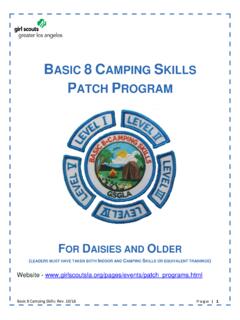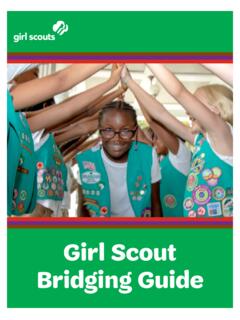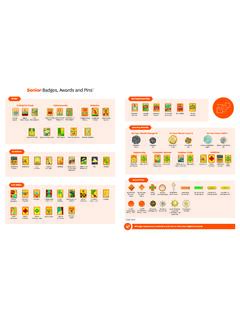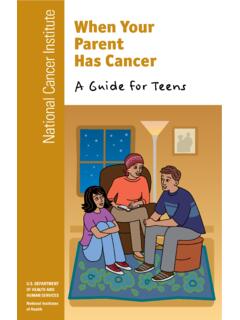Transcription of People First Language Style Guide - DCBDD
1 Delaware County Board of Developmental Disabilities People First Language Style Guide A reference for media professionals and the public 7991 Columbus Pike Lewis Center, OH 43035 What is People First Language ? People First Language (also referred to as People First ) is an accurate way of referring to a person with a disability. This Style Guide offers an alphabetical list of standard terms that focus on the person instead of the disability. It is not a complete list but a general representation of terms People with disabilities commonly find respectable. Why People First Language ? Words matter!
2 The words we use to describe People have a significant impact on the way we perceive People and our attitudes towards them. By using People First Language we focus on the person First , not their disability. People are unique and their abilities or disabilities are simply are part of who they are, not what defines them. Using People First Language is a great way to remove barriers and encourage mutual respect. The most important thing to remember is People are People , no matter their abilities. The best way to be person-centered is to refer to the person with the disability the same way you would refer to yourself, a family member or friend.
3 Tips for Using People First Language Avoid using terms or descriptions that suggest pity ( suffers from ). When you use terms like this it assumes the person with a disability is living a reduced quality of life. Keep in mind that some disability groups have a variety of reasons for disliking certain phrases. When talking to or writing about someone with a disability, it is always good to ask the person which words or phrases are acceptable to them. Focus on People 's abilities rather than their disabilities. Emphasize what they can do or like to do, not what they can't do. It is okay to talk about someone's disability or describe the impact it has had on their life.
4 When doing so, just be sure to focus on the person First and always refer to their disability respectfully and accurately. For more information or questions, contact: Anne Miller Communications and Public Relations Coordinator Delaware County Board of Developmental Disabilities 740-201-5810. People First Style Guide Page 1. Quick Reference PREFERRED NOT PREFERRED. She has girl Congenital defect He is blind/visually person Person She is deaf/hard of person He has a disability (be specific if possible)..Disabled, retard, handicapped, etc. She has Down child, mongoloid He has Accessible parking Little (Ask the person his/her preference).
5 She doesn't speak/uses nonverbal Uses a People First Style Guide Page 2. A. Attention Deficit Hyperactivity Disorder (ADHD). Involves learning and behavioral challenges that do not have any serious underlying physical or mental causes. It is characterized by difficulty in sustaining attention, impulsive behavior and excessive activity. Preferred Use: child with ADHD. Not Preferred: hyperactive Autism Spectrum Disorder (ASD). A developmental disability originating in infancy. Autism and autism spectrum disorder (ASD). are general terms for a group of complex disorders of brain development characterized by difficulties in social interaction, Language dysfunction and repetitive behaviors.
6 Preferred Use: child with autism, she has autism, on the spectrum . Not Preferred: autistic child B. Blind. Describes a person with a complete loss of sight. For others, use terms such as visually impaired or person with low vision. Preferred Use: person with visual impairments, boy who is blind Not Preferred: the blind, blind person Brain Injury. A temporary or long-term disruption in brain function resulting from injury to the brain. Difficulties with cognitive, physical, emotional and/or social functioning may occur. Preferred Use: person who has a brain injury, woman who sustained a brain injury, boy with an acquired brain injury Not Preferred: brain damaged, suffers from brain damage People First Style Guide Page 3.
7 C. Cerebral palsy (CP). Refers to a number of neurological disorders that appear at birth, in infancy or early childhood and permanently affect body movement and muscle coordination, but don't worsen over time. Preferred Use: a person with cerebral palsy, he/she has cerebral palsy Not Preferred: Cerebral palsy victim, cerebral palsied, spastic, a CP. Congenital disability. A disability present since birth. Preferred Use: has a congenital disability, was born with a disability, has had a disability since birth Not Preferred: birth defect, defective D. Deaf. Describes a person with a profound or complete hearing loss.
8 Language often develops differently from those who have hearing. Many People who are hearing impaired have mild to moderate hearing loss that may or may not be corrected with amplification. There is no uniform terminology so it is best to ask the person which term is suitable. Preferred Use: hearing impaired, woman who is deaf, boy who is hard of hearing, partially deaf Not Preferred: deaf and dumb, deaf mute Developmental disabilities. An intellectual or physical disability that occurs at birth or before age 22, is expected to be life- long and affects one or more major life activities. It is an umbrella term.
9 Preferred Use: an individual with: a disability, autism, epilepsy, a brain injury, etc. Not Preferred: retarded, disabled, handicapped, autistic, epileptic, brain damaged People First Style Guide Page 4. Down Syndrome. Describes a chromosomal irregularity that results in a delay in physical, intellectual, and Language development. Preferred Use: a person with Down syndrome Not Preferred: Mongol, Mongoloid, Down's baby E. Epilepsy. Describes a chronic neurological and developmental disorder characterized by recurrent, unprovoked seizures, according to the Epilepsy Foundation. Preferred Use: he/she has epilepsy Not Preferred: he's an epileptic H.
10 Handicap. The term handicap should not be used when describing a disability. The term is widely used when citing laws and regulations, parking, places, although many prefer the term accessible. Preferred Use: she has a disability Not Preferred: she's handicapped L. Learning disability. Anything that permanently affects how a person processes, retains and expresses information. Preferred Use: a child with a learning disability Not Preferred: slow, slow learner, retarded People First Style Guide Page 5. Little person/little People . Refers to People of short stature, below 4 feet 10 inches. Groups focusing on this issue are often divided between using little person or dwarf, as some People are offended by those terms and others are not.




